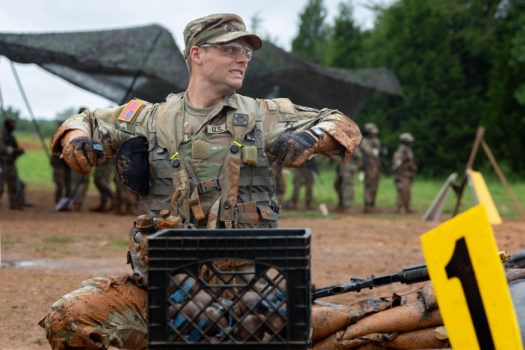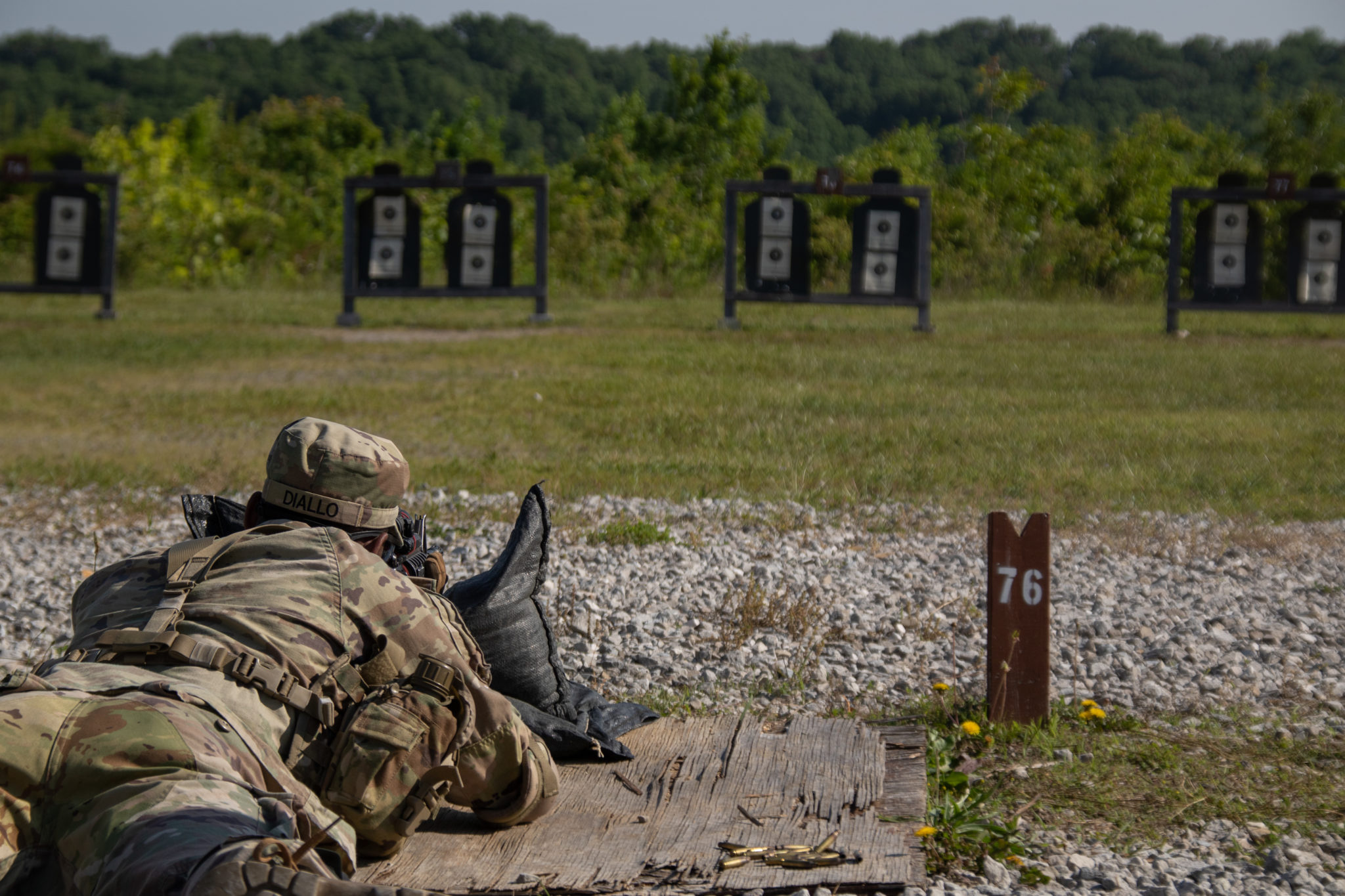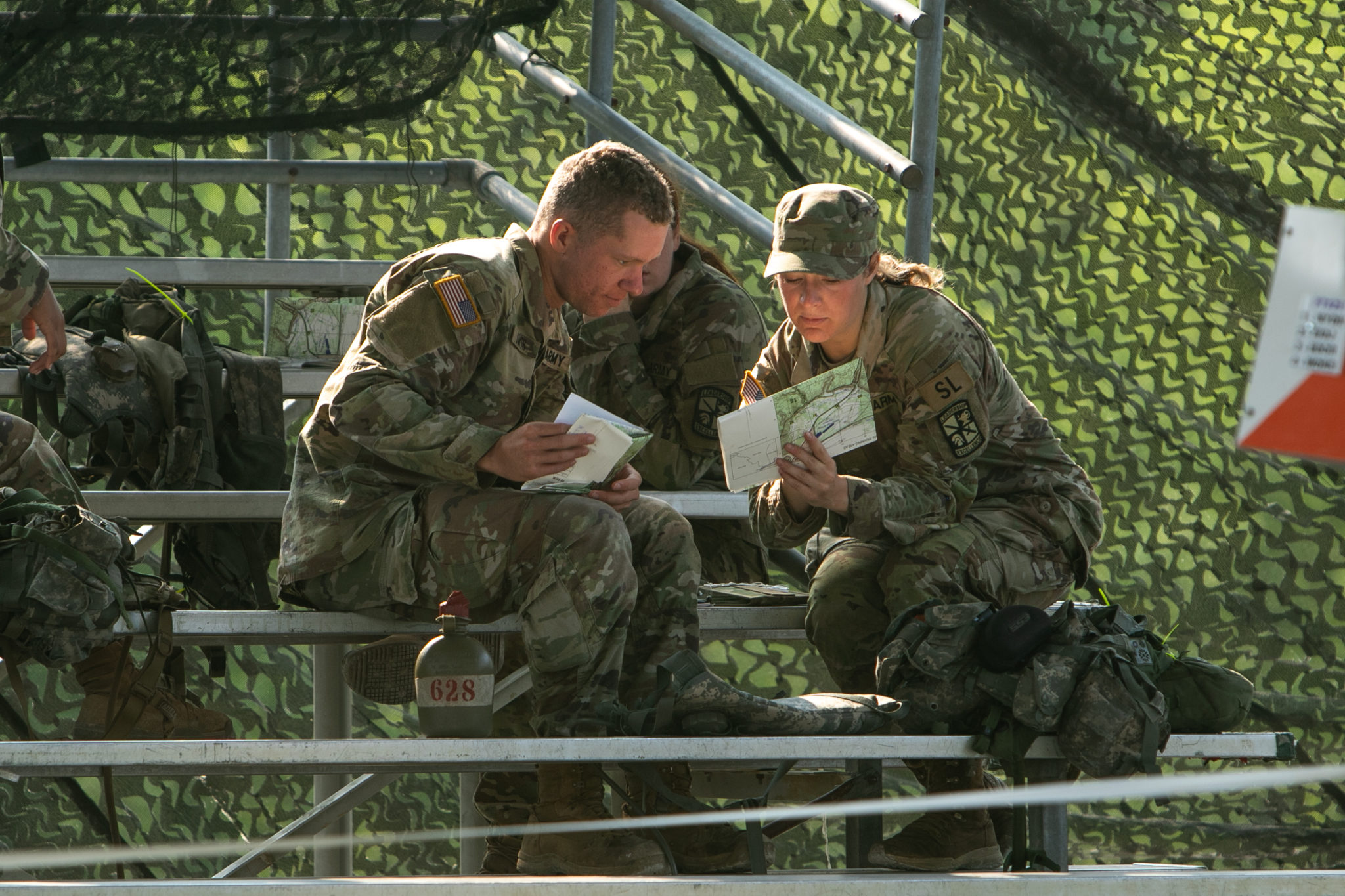“The grenades are definitely a lot heavier than a softball or baseball, so you have to put a little bit more muscle into it, but it definitely helps with the mechanics,” Cadet Brianna Gowans from Texas A&M University, Central Texas said.
11th Regiment, Advanced Camp Cadets learned how to properly throw hand grenades during Cadet Summer Training at Fort Knox, Ky. Each Cadet had the opportunity to throw a total of six grenades, the first two being dummies followed by four simulated hand grenades.

Before joining the army, Gowans played softball for most of her life.
“All throughout elementary school and high school. I played on summer leagues and then I played two years of D3 college softball until I left to join the army,” Gowans said.
Gowans believed her softball skills gave her an advantage during the hand grenade training exercise.
“I’ve also been to basic training before, so I’ve done this exact same exercise, but it is all the same mechanics,” Gowans said. “Pulling the ball back, knowing exactly how hard you’re gonna have to throw it in order to get it where you want it to go and aiming.”
Similar to Gowans, Cadet Shane Morrissey from the University of South Florida felt he had the upper hand after playing baseball for 18 years.

“My dad had grown up playing baseball as well, so I started early on in the little league when I was a kid, then eventually went to a travel ball team with a lot of my buddies. Then it went to middle school ball and then eventually high school” Morrissey said.
During his time at Cadet Summer Training, Morrissey discovered hand grenades were in fact created to resemble the size of a baseball.
“Back when frag grenades were first invented, they were invented to emulate a baseball as much as the military could,” Morrissey said. “Because every man or at least 18 and above knows how to throw a baseball at that age, so they try to make it as similar as possible.”
Due to his baseball past, Morrissey had no issues reaching the target and even had to course correct after initially throwing the grenade past the target.
“I was overthrowing the target a little bit and then after hearing some instructions on where the grenade actually was landing from the soldier, I was able to correct and hit the target pretty spot on,” Morrissey said. “If you overthrow it, it’s just as bad as if you underthrow it in terms of in battle, however, I think making the correction to hitting the target is probably a lot easier if you are overthrowing it.”
Although having athletic training is not required, these Cadets credit their sports backgrounds for enabling them to accomplish the training exercise successfully.




